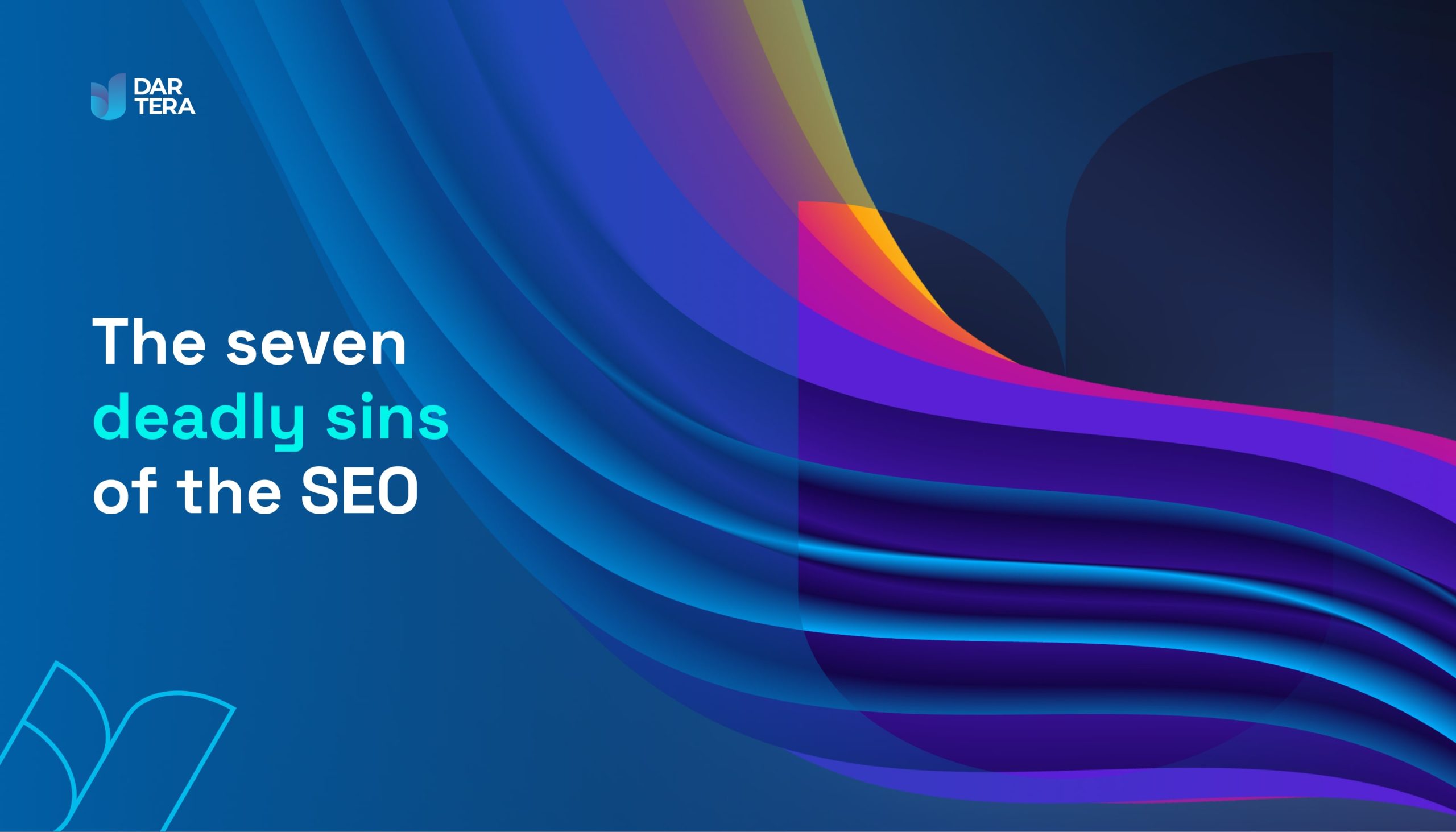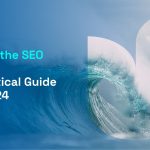The seven deadly sins of SEO

SEO is an experimental field.
When your website is at the mercy of an elusive algorithm, it opens up the playing field for innovation and pushing the boundaries of traditional tactics and "best practices."
Despite changing trends and algorithm updates, however, the same still applies: What is good for the searcher is also good for search engine optimization.
But in their relentless pursuit of more traffic, many digital marketers keep forgetting this - hindering their SEO efforts by making the same mistakes over and over again.
So instead of writing another article about what you should do to have a search engine friendly website, it seems to make more sense to say what you shouldn't do.
The truth is that you can innovate all you want, but if you make one (or more) of these common mistakes, it won't make much difference.
Without further ado, here are the seven deadly sins of search engine optimization.
Recognize them, and avoid them at all costs!

Sin #1: Spammy Backlinks
Backlinks are crucial for search engine optimization. The more quality links you have, the more credible and trustworthy your website is in the eyes of a search engine. However, building backlinks is notoriously difficult.
Over the years, marketers have had to get creative with their tactics. This has also led to some people using ethically questionable practices to get more links, especially by paying for them. Buying backlinks falls under the category of black hat SEO.
For those who are not familiar with it, these are bad SEO tactics that violate search engine guidelines and try to manipulate the system.
Basically, this is considered fraud, and your website can be penalized for it. Search engines have no problem taking action against your website if it violates their rules. If you want to play the traffic game, you need to play it fairly.
Aside from the fact that paying for backlinks is pretty unethical, it's also a generally ineffective tactic. This is because many of the links offered for purchase come from spammy, irrelevant websites.
One of the first things you learn in SEO is that not all backlinks are worth the same. Search engines give much more weight to links that come from credible websites.
Ten quality links are much better than 100 questionable links.
Spam links can also originate organically. Sometimes these low-quality websites link to you on their own. Therefore, it is important to go through your backlink profile regularly and remove the spam.
While it may be tempting to seek out spammy links for a quick "boost," it's not worth the consequences. Instead, focus on acquiring links organically by creating quality content that will encourage other websites to link to you.

Sin #2: Misunderstanding the search intention
Search intent is the purpose or end goal behind a user's search query.
The reason search intent is so difficult is because the way you understand a keyword may be completely different from the way it is interpreted by a search engine.
This is best illustrated by an example:
Let's say you're writing an article about content management systems and you want to target the keyword "CMS" with high volume. This makes sense, because CMS is a common abbreviation for "Content Management System".
However, when you type "CMS" into the search, you find that all of the organic results have to do with a completely different topic: the Centers for Medicare & Medicaid Services, a government agency.
*facepalm*
It's time to readjust the keyword targeting for your article.
If you write the entire article on the topic of "CMS", it will probably not rank. This is because you are talking about a type of software, but the search intent for this keyword refers to a federal agency in the United States.
The easiest way to avoid a search mishap is to always do your keyword research with due diligence. As you can see from the example, it is quite easy to perform a quick search for the target keyword and check the results.
This shows you how the search engine interprets the query based on the content recommendations it provides.

Sin #3: User experience remains an afterthought
A website with poor UX is a ticket to poorer search results. But for many marketers, usability still takes a back seat to content creation.
You will notice that there is a common thread running through this article: What's good for the user is also good for search engine optimization.
At some point, each of us has landed on a website with slow, buggy features and lots of pop-ups. When I land on such a website, my first instinct is to leave it. I'm sure many others feel the same way.
What's the point of creating top-notch content if your target audience can't or doesn't know how to navigate it?
Moreover, solving a UX problem often requires the additional help of a web designer or software developer. It's not always an easy solution, but it is critical.
Search engines are designed to deliver the most user-friendly results on the web. So it doesn't matter how good your content is if your website makes it impossible to enjoy.
For this reason, a functional, accessible, and easy-to-navigate website should be at the top of your to-do list.

Sin #4: Over-optimization
Believe it or not, there is such a thing as over-optimization.
In SEO, we like to call this keyword stuffing. This is the overuse of keywords on a web page to achieve better organic rankings. You place keywords in the metadata, body text, or link anchor text of a page in a way that is clearly forced or unnatural.
Here is an example:
"Company X is your one-stop store for everything social media marketing. Our social media marketing software is a world-class solution used by social media marketing professionals around the world. Here you'll find everything you need for your social media marketing."
Not all keyword stuffing is so obvious, but you get the idea.
In the early days of the Internet, you could stuff a web page with keywords to trick the system and improve rankings. But as time went on and search engines became more sophisticated, this practice quickly became obsolete. Today, keyword stuffing is associated with black hat SEO and can get your website penalized or even permanently deindexed.
It's worth noting that keyword stuffing can sometimes be unintentional. To avoid this, take the time to identify multiple keyword variations when planning and researching your content. Think of different ways to say the same thing - synonyms are your best friend.
When in doubt, remember that you are creating content for people. Not for bots or crawlers of search engines.

Sin #5: Taking traffic as the only measure of success
The goal of search engine optimization is essentially to increase organic traffic. However, that doesn't necessarily mean that traffic should be the only metric you use to monitor SEO performance.
Taken on its own, traffic is nothing more than a vanity metric.
If you have a million monthly web visitors, but none of those visitors are converting into leads or customers, it doesn't really matter, does it?
You need to look at traffic along with other important metrics like bounce rate, click-through rate, and conversions. Only then will you get a complete picture of what is actually happening on your website.
It is also important to know that data is not always black and white. Some of your highest converting pages may also be among the lowest traffic pages. But that doesn't mean they are any less valuable.
Don't fixate on organic traffic alone. While it is a strong indicator that your SEO efforts are making an impact, it is only one part of a much larger story.

Sin #6: Content cuts
It's time consuming to design and create good content, that's just the way it is. As a result, many marketers fall into the trap of creating lackluster content just to rank well.
The more content you create, the higher your chances of ranking organically for new keywords. However, you should never sacrifice quality for quantity.
You won't do yourself any favors in the long run with mediocre content. If you're rushing through your editorial calendar just to get something published, your posts probably aren't worth your time or money.
Content without research, data, uniqueness, and some level of entertainment rarely attracts backlinks and is less attractive for other quality sites to link to.
Besides, you risk losing readers. Your content should be primarily for your audience. If you're just writing mindless 700-word articles to rank well, how is that going to strengthen your brand, help your sales team, or encourage your audience to want to work with you?
It's more labor intensive, but taking the time to create good content is one of the best things you can do for SEO.
Put yourself in your audience's shoes and what they value when you develop topic ideas. Do research on how they want to consume content. Video or article? Podcast or live show?
Assess the SERP to see what is currently ranking and find gaps where those pieces are missing and make sure your pieces are more robust, data-driven and easier to digest.
Creating SEO-ready content is no excuse to sacrifice quality or creativity. In fact, these elements should be indispensable if you want to outdo your competitors and build your brand.

Sin #7: Putting copying and research on the back burner
The texts on your website play a crucial role in the way visitors perceive and understand your company. They also have a significant impact on your search engine optimization.
Thorough and strategic copywriting combined with extensive audience research is critical to advancing search engine marketing as a whole.
Most marketers now know that you have to do keyword research before you can start writing content. However, many don't understand how detailed you need to be in your research if you want to see real SEO results.
Take the time to study your target customer persona(s) carefully. Get an idea of what they are interested in and what problems they are trying to solve. Perform in-depth keyword analysis to understand what terms they are using for their search. Assess the language your competitors are using.
Then, you can incorporate these insights into the text of your website.
Remember that traffic without conversions is just a number. Powerful copy is the secret ingredient that attracts users, captures their intentions, addresses their problems, and then moves them to action.
Not every marketer is an experienced copywriter. But by thoroughly understanding your target audience and their online behaviors, any marketer can get better at writing copy that drives organic traffic and conversions and provides a frictionless experience for visitors.








